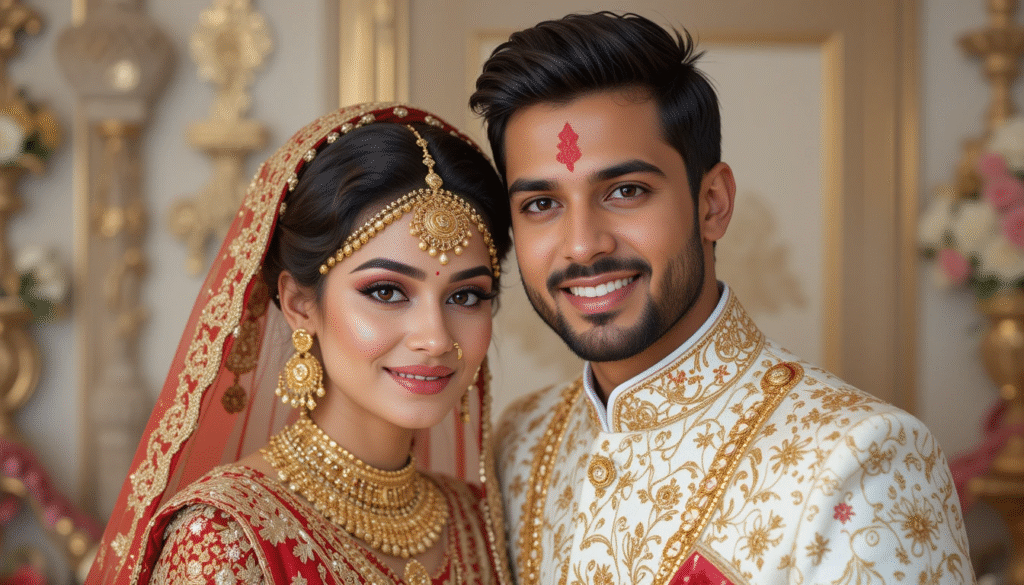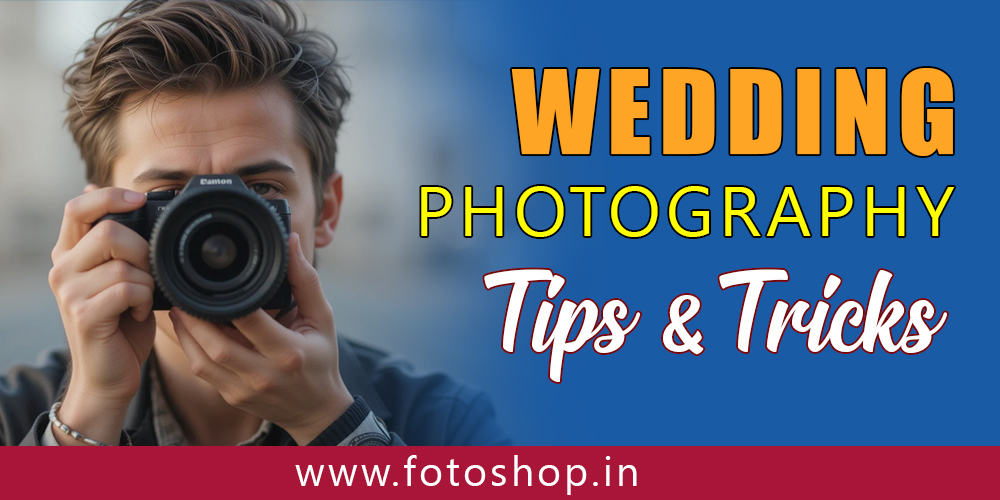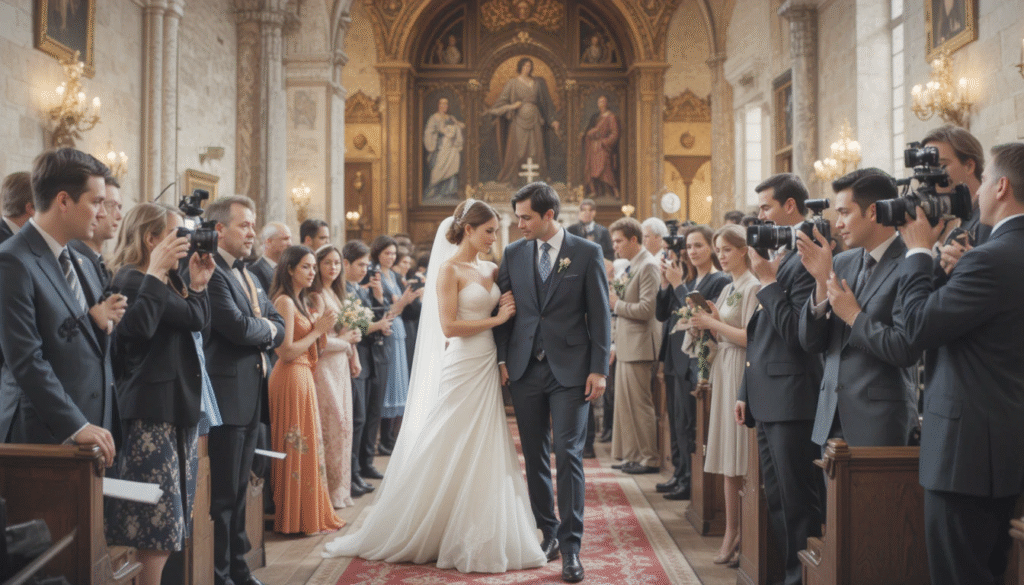Capturing the magic of a wedding day is both an art and a responsibility. Whether you’re a professional photographer or a beginner looking to make a mark in the wedding industry, understanding how to create the best wedding photography is key. We’ll look at professional advice, methods, and imaginative concepts in this book to help you produce classic and stunning wedding images.
1. Understand the Couple’s Vision
Before the big day, sit with the couple to understand their story, preferences, style, and expectations. Are they looking for candid shots, traditional poses, or cinematic-style photography? Understanding their vision helps you plan your shots and match the overall wedding theme.
2. Scout the Location
Visit the wedding venue in advance. Study the lighting, backgrounds, and potential shooting spots. Look for areas with natural light, beautiful architecture, gardens, or open spaces. Planning ahead ensures you won’t miss out on creative framing opportunities.
3. Use Professional Equipment
High-quality equipment is essential for creating the greatest wedding photos:
- Camera: Full-frame DSLR or mirrorless (e.g., Canon R5, Nikon Z6, Sony A7 series).
- Lenses: 24–70mm for versatility, 50mm for portraits, 70–200mm for ceremonies.
- Lighting: On-camera and off-camera flash, reflectors, and softboxes for indoor shots.
A lens cleaning kit, memory cards, additional batteries, and a tripod are examples of accessories.

4. Capture the Emotions and Details
Numerous feelings are evoked during weddings, such as joy, excitement, sadness, and laughing.
- The groom’s first look at the bride
- Parents’ emotional reactions
- Fun moments during the dance or rituals
Also, don’t miss the small details:
- Bridal dress and accessories
- Decor and table setups
- Invitation cards, rings, mehendi designs, etc.
5. Work with the Light
Lighting can make or break a photo. Use natural light during golden hours (sunrise or sunset) for romantic and dreamy portraits. To prevent harsh shadows or overexposure in low-light situations, balance your flash with the surrounding light.
6. Create a Shot List
Prepare a checklist of must-have wedding photos, such as:
- Couple portraits
- Group family photos
- Wedding rituals and traditions
- First dance, cake cutting, and bouquet toss
This ensures you won’t miss any important moments.
7. Edit with Precision
Post-processing is where good photos become great. Use Lightroom or Photoshop to enhance colors, balance exposure, and remove distractions.
Keep your adjustments natural and consistent with your overall approach.
8. Be Professional and Friendly
Your attitude matters just as much as your photography. Be calm, polite, and patient with the couple, family, and guests. A positive experience can lead to more referrals and long-term clients.
Tips & Tricks for Upcoming Photographers
Before the Wedding Day:
- Second Shoot, Second Shoot, Second Shoot: This is the most crucial tip. Offer to be a second shooter for established wedding photographers, even for free initially. You’ll learn workflows, see how they handle pressure, and build a portfolio without the primary responsibility.
- Know Your Gear (Inside Out): Practice with your camera and lenses extensively before the wedding. Be able to change settings, lenses, and batteries in the dark without looking. Time is precious on a wedding day.
- Understand the Timeline: Get a detailed timeline from the couple (or the lead photographer if second shooting). This helps you anticipate key moments (first look, ceremony, dances) and be in the right place at the right time.
- Scout the Venue (if possible): If you can, visit the venues (getting ready, ceremony, reception) beforehand. Look for good light, interesting backdrops, and potential challenges.
- Pack smartly and have backups: Check your batteries (completely charged), memory cards (empty), and lenses. Have backup gear (camera body, lens, flash) if possible, even if it’s just an old point-and-shoot for emergencies.
During the Wedding Day:
- Anticipate Moments: Don’t just react; anticipate. Watch for emotions, interactions, and key events. For example, during the ceremony, anticipate the kiss, the ring exchange, and family reactions.
- Shoot in RAW: This gives you much more flexibility in post-processing to correct exposure, white balance, and colors.
- Master Available Light First: While flash is important, learn to use natural light effectively. It often creates a more beautiful and natural look. Look for window light, open shade, and golden hour.
- Change Up Your Shots: Avoid taking all of your shots at eye level. Get high, get low. Shoot wide, shoot tight. Get detail shots (rings, shoes, flowers) and environmental shots.
- Communicate Clearly (but discreetly): If you need someone to move slightly or look a certain way, be polite and concise. Don’t be disruptive during sensitive moments.
- Look for Emotion: Beyond posed shots, capture genuine laughter, tears, hugs, and tender moments. These are the photos couples cherish most.
- Get the Key Moments: Always prioritize the essential shots: the walk down the aisle, the vows, the kiss, the first dance, the cake cutting.
- Be a Fly on the Wall: When people are being honest, try to stay out of the way. Let the day unfold naturally.
- Stay Hydrated and Energized: Wedding days are long and demanding. Bring snacks and water to keep your energy up.
- Don’t Chimp (Excessively): While it’s good to occasionally check your exposure, don’t spend too much time reviewing images on your camera’s screen. You might miss crucial moments.
After the Wedding Day:
- Backup Your Photos IMMEDIATELY: As soon as you get home, transfer your photos to at least two different storage locations (e.g., hard drive and cloud storage).
- Curate Ruthlessly: You’ll have thousands of photos. Be selective and only present the best ones. Don’t overwhelm the couple with too many similar shots.
- Learn Post-Processing Basics: Understand how to use editing software (Lightroom, Photoshop) for basic corrections, color grading, and retouching.
- Ask for Feedback: Share your work with experienced photographers and be open to constructive criticism.
- Reflect and Learn: After each wedding, review what went well and what you could improve. This continuous learning is key to growth.
General Mindset:
- Be Professional and Personable: You’re interacting with people on one of the most important days of their lives. Be polite, friendly, and reassuring.
- Dress Appropriately: Blend in. Dress in comfortable, professional attire that allows you to move freely.
- Stay Calm Under Pressure: Things will go wrong. Light will change, schedules will slip. Stay calm, adapt, and keep shooting.
- Don’t Compare Yourself Too Much: It’s easy to get discouraged by seeing amazing work online. Focus on your own progress and learning.
Have Fun! Wedding photography is challenging but incredibly rewarding. Enjoy the process of writing down these valuable memories.
Frequently Asked Questions.
Q1: What is the best time for outdoor wedding portraits?
The most beautiful natural light is available during golden hour, which is an hour after dawn or before sunset.
Q2: How many photos should I deliver for a full-day wedding?
Typically, between 400–800 professionally edited images.
Q3: Should I shoot in RAW or JPEG?
Always shoot in RAW for higher quality and better editing flexibility.
Q4: Do I need a second shooter?
Yes, it’s helpful for covering ceremonies, guest moments, and different angles simultaneously.
Q5: How long should editing take?
Editing a full wedding gallery usually takes 2–3 weeks, depending on the workload.



